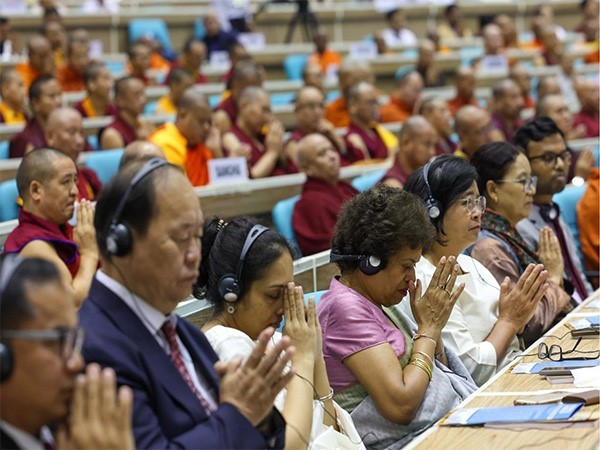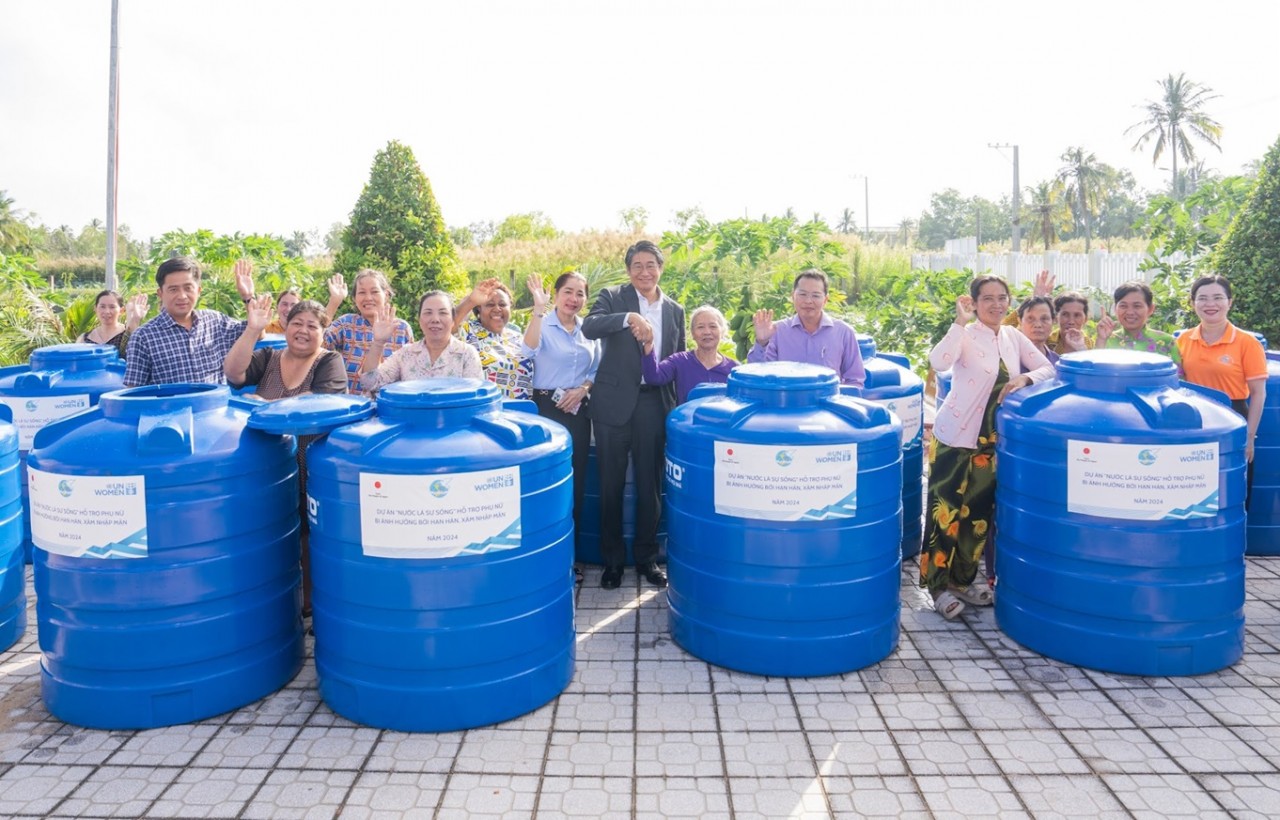More than 400 killed in Indonesia quake-tsunami; toll still rising
More than 400 people were killed when a powerful quake sent a tsunami barrelling into the Indonesian island of Sulawesi, officials said on Saturday (Sep 29), as hospitals struggled to cope with hundreds of injured and rescuers scrambled to reach the stricken region.
 |
The ruin of a mosque badly damaged by earthquake and tsunami is seen in Palu, Central Sulawesi, Indonesia on Sep 29, 2018. (Photo: AP/Rifki)
Dozens of people were reported to be still trapped in the rubble of a hotel in the city of Palu, which was hit by waves as high as six meters (20 feet) following the 7.5 magnitude earthquake.
Hundreds had gathered for a festival on the city's beach when the wall of water smashed onshore at dusk on Friday, sweeping many to their deaths and destroying anything in its path. Indonesian President Joko Widodo was scheduled to visit evacuation centers in the city on Sunday.
The Head of the National Disaster Management Agency (BNPB), Willem Rampangilei, told reporters in Sulawesi late on Saturday the death toll from Palu had reached 420 people, according to news website Kompas.
Some 540 people have been badly injured, officials added.
"It's estimated that 10,000 refugees are scattered in 50 points in Palu city," he was quoted by Kompas as saying. "We are having difficulty deploying heavy equipment to find victims under the rubble of buildings because many of the roads leading to Palu city are damaged."
Earlier authorities had put the death toll at 384.
There were also concerns over the whereabouts of hundreds of people preparing for a beach festival that had been due to start Friday evening, the disaster agency said.
In Palu - home to around 350,000 people - partially covered bodies lay on the ground near the shore after tsunami waves 1.5 metres (five feet) high hit the coast.
TOLL SEEN RISING
BNPB spokesman Sutopo Purwo Nugroho told a briefing in Jakarta the damage was "extensive" and said thousands of houses, hospitals, shopping malls and hotels had collapsed. A bridge was washed away and the main highway to Palu was cut off due to a landslide.
"The tsunami didn't come by itself, it dragged cars, logs, houses, it hit everything on land," Nugroho said, adding that the tsunami had traveled across the open sea at speeds of 800 kph (500 mph) before striking the shoreline.
Nugroho said that casualties and damage could be greater along the coastline for 300 km (200 miles) north of Palu, an area called Donggala, which is closer to the epicenter of the quake.
The Red Cross said staff and volunteers were heading to the affected areas.
Residents, meanwhile, sifted through a tangled mess of corrugated steel roofing, timber, rubble and flotsam that the waves had pushed some 50 metres inland.
One man was seen carrying the muddy corpse of a small child.
Many did not return to their homes as night fell and went to sleep in makeshift shelters under the open sky, terrified that powerful aftershocks could topple damaged homes.
 |
Scores of people are believed to have died in the quake-tsunami that hit the Indonesian island of Sulawesi on Friday. AFP/MUHAMMAD RIFKI
Hospitals were overwhelmed by the influx of those injured, with many people being treated in the open air, while other survivors helped to retrieve the remains of those who died.
The tsunami was triggered by a strong quake that brought down buildings and sent locals fleeing for higher ground as a churning wall of water crashed into Palu, where there were widespread power blackouts.
"We all panicked and ran out of the house" when the quake hit, said Anser Bachmid, a 39-year-old Palu resident.
"People here need aid - food, drink, clean water. We don't know what to eat for dinner tonight."
"I JUST RAN"
Dramatic video footage captured from the top floor of a parking ramp in Palu, nearly 80 kilometres (50 miles) from the quake's epicentre, showed waves bring down several buildings and inundate a large mosque.
"I just ran when I saw the waves hitting homes on the coastline," said Palu resident Rusidanto, who like many Indonesians goes by one name.
About 17,000 people had been evacuated, the disaster agency said, and that figure is expected to rise.
The shallow 7.5 magnitude tremor was more powerful than a series of quakes that killed hundreds on the Indonesian island of Lombok in July and August.
 |
Medics were forced to treat people outside after the huge quake-tsunami. AFP/MUHAMMAD RIFKI
Indonesian president Joko Widodo said the military was being called in to the region to help search-and-rescue teams get to victims and find bodies.
"This was a terrifying double disaster," said Jan Gelfand, a Jakarta-based official at the International Federation of Red Cross and Red Crescent Societies.
"The Indonesian Red Cross is racing to help survivors but we don't know what they'll find there."
 |
Medical team members help patients outside a hospital after an earthquake and a tsunami hit Palu, on Sulawesi island on Sep 29, 2018. (Photo: AFP / MUHAMMAD RIFKI)
The massive tremors were felt hundreds of kilometres away and there has been little word about casualties in Donggala, a region north of Palu where at least one person was reported dead in Friday's quakes.
"We have heard nothing from Donggala and this is extremely worrying," Gelfand said.
"There are more than 300,000 people living there. This is already a tragedy, but it could get much worse."
The quake hit just off central Sulawesi at a depth of 10 kilometres (six miles) just before 1100 GMT - early evening in Indonesia - the U.S. Geological Survey said. Such shallow quakes tend to be more destructive.
 |
The ruins of cars as seen after tsunami hit in Palu, Indonesia September 29, 2018. REUTERS/Stringer
Pictures supplied by the disaster agency showed a badly damaged shopping mall in Palu where at least one floor had collapsed onto the storey below, while other photographs showed major damage to buildings and large cracks across pavements.
Video from the scene showed a landmark double-arched yellow bridge had collapsed with its two metal arches twisted as cars bobbed in the water below.
An AFP reporter on the scene saw widespread damage some 50 metres inland.
A key access road had been badly damaged and was partially blocked by landslides, the disaster agency said.
 |
Resident checks dead bodies to find their family at a street after tsunami hit in Palu, Indonesia September 29, 2018. REUTERS/Stringer
Some government planes carrying relief supplies had managed to land at the main airport in Palu, although officials said the airport would likely remain closed to commercial flights until Thursday.
Neighbouring Malaysia has offered to send help to Sulawesi, a government spokesman there told AFP, adding Malaysia "was waiting for Indonesia's reply."
EVENING PRAYERS
Friday's tremor was also felt in the far south of the island in its largest city Makassar and on neighbouring Kalimantan, Indonesia's portion of Borneo island.
The initial quake struck as evening prayers were about to begin in the world's biggest Muslim majority country on the holiest day of the week, when mosques are especially busy.
Indonesia is one of the most disaster-prone nations on earth.
It lies on the Pacific "Ring of Fire", where tectonic plates collide and many of the world's volcanic eruptions and earthquakes occur.
Earlier this year, a series of powerful quakes hit Lombok, killing more than 550 people on the holiday island and neighbouring Sumbawa.
Indonesia has been hit by a string of other deadly quakes including a devastating 9.1 magnitude tremor that struck off the coast of Sumatra in December 2004.
That Boxing Day quake triggered a tsunami that killed 220,000 throughout the region, including 168,000 in Indonesia./.
VNF/AFP
Most read
Recommended
 World
World
2024 US Presidential Election: Voters Focus on Economy, Social Security, and Housing
 World
World
Promoting Vietnam’s Rich Culture, Economic Growth in the US
 World
World
Modi's GatiShakti is India’s gift to the third world for transforming infrastructural planning
 World
World
European and Vietnamese Universities Expand Scientific Cooperation
Popular article
 World
World
Abhidhamma Divas Honours Teachings of Lord Buddha, Celebrates Revival of Pali Language
 World
World
Birch: The Miracle Tree of Russia
 World
World
With India in leadership role in Quad, the ‘string’ stitching China’s ‘pearls’ now doomed to snap
 World
World








